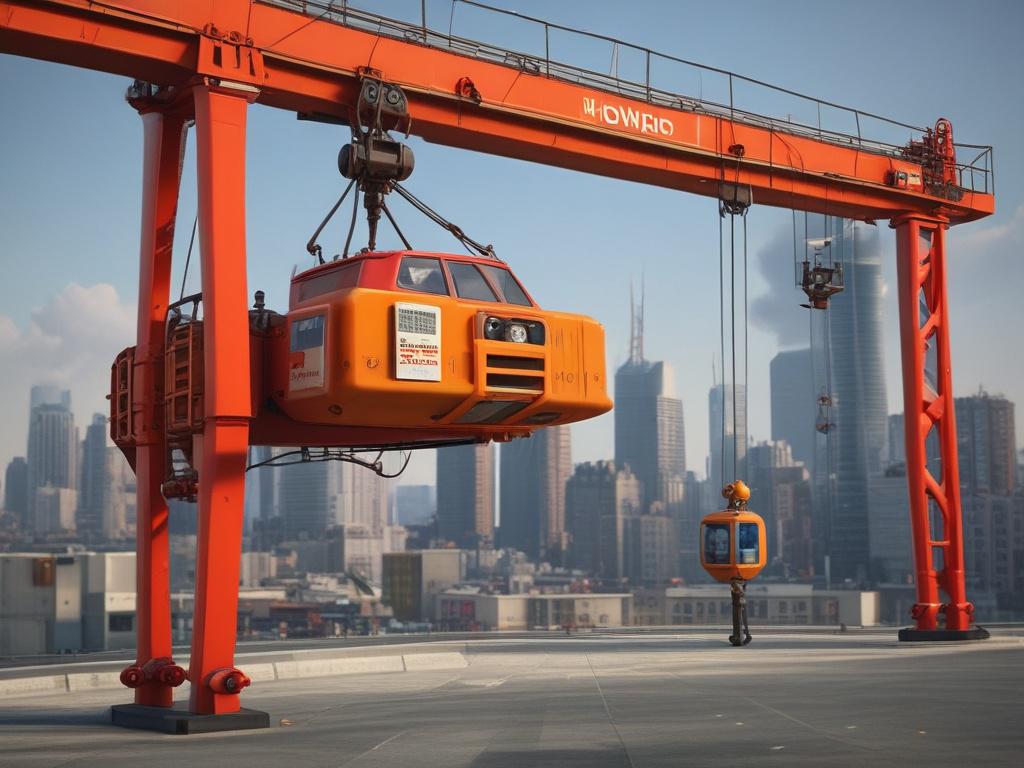
When it comes to lifting operations, choosing the right device underneath your crane is as essential as the crane itself. A crane may be the powerhouse of any lifting project, but the effectiveness and safety of the entire operation hinge on the tools used to connect loads to that crane. Inadequate or improperly selected lifting devices can compromise not only the integrity of the load but also the safety of the personnel involved.
This blog post will explore the most common errors associated with lifting devices under cranes and outline the key factors to consider for optimal equipment selection.
Choosing the correct device underneath your crane is as vital as the crane itself. A crane may possess robust capabilities and be able to lift heavy loads, but its effectiveness relies heavily on the lifting device you pair it with. The correct lifting device ensures that loads are lifted safely, efficiently, and in a controlled manner. Without it, even the most advanced cranes can become prone to operational inefficiencies, accidents, and equipment damage. Understanding this relationship is crucial for optimal lifting operations.
Further, using the wrong lifting device can lead to serious safety hazards. If the device cannot handle the weight or type of load being lifted, it can fail, leading to falling loads and potential injuries. Additionally, improper lifting devices can cause wear and tear on the crane itself, leading to expensive repairs and downtime. For this reason, it’s essential to prioritize the selection of the appropriate lifting device to complement the crane's capabilities, ensuring smooth operations and promoting a safe working environment.
When working with cranes, many operators overlook the significance of the lifting devices they use underneath. A common mistake is selecting lifting equipment that does not match the load's weight or shape. Using the wrong type of device can lead to accidents, damage to the load, or even damage to the crane itself. Operators often assume that a one-size-fits-all approach will suffice, which is rarely the case. This oversimplification not only compromises safety but can also hinder operational efficiency, resulting in costly downtime and potential injuries.
Another frequent mistake is ignoring the compatibility of lifting devices with the crane's specifications. Each crane has specific capacities and limitations, and using devices that exceed these parameters can overload the equipment. Additionally, failing to consider environmental factors—such as operating in extreme temperatures or handling corrosive materials—can further exacerbate these issues, leading to premature wear and failure. Proper education and training on the selection and use of lifting devices can significantly reduce these common mistakes, ensuring both safety and operational efficiency.
Choosing the correct lifting device underneath your crane is crucial for ensuring safety and efficiency on the job site. First and foremost, thoroughly assess the load requirements. Understand the weight and dimensions of the items you plan to lift, as well as any unique characteristics, such as center of gravity or critical lifting points. This information will help you select a device that can safely handle the weight and provide the necessary stability during lifting operations. Always factor in the potential for dynamic loads, as equipment may experience additional stresses during movement.
Another essential factor to consider is the specific environment where lifting will take place. Different lifting devices excel in various conditions, such as outdoor versus indoor settings, rough terrain, or extreme weather. Additionally, consider the compatibility of the lifting device with the crane being used. Ensure that the attachment points and the lifting method align with the crane's specifications to prevent unnecessary wear and accidents. Lastly, remember to factor in the operator's experience and training, as even the right equipment can lead to failure if not used correctly.
Since 1974, T&M Cranes has been a trusted, family-owned leader in overhead cranes, hoists, parts, and expert service. With over five decades of industry experience, we deliver customized solutions, reliable repairs, and ongoing maintenance that keep your operations safe, efficient, and productive. Whether you're upgrading equipment or troubleshooting a system, our knowledgeable team is here to help—every step of the way.
Get in touch today and discover why businesses nationwide rely on T&M Cranes to keep things moving.